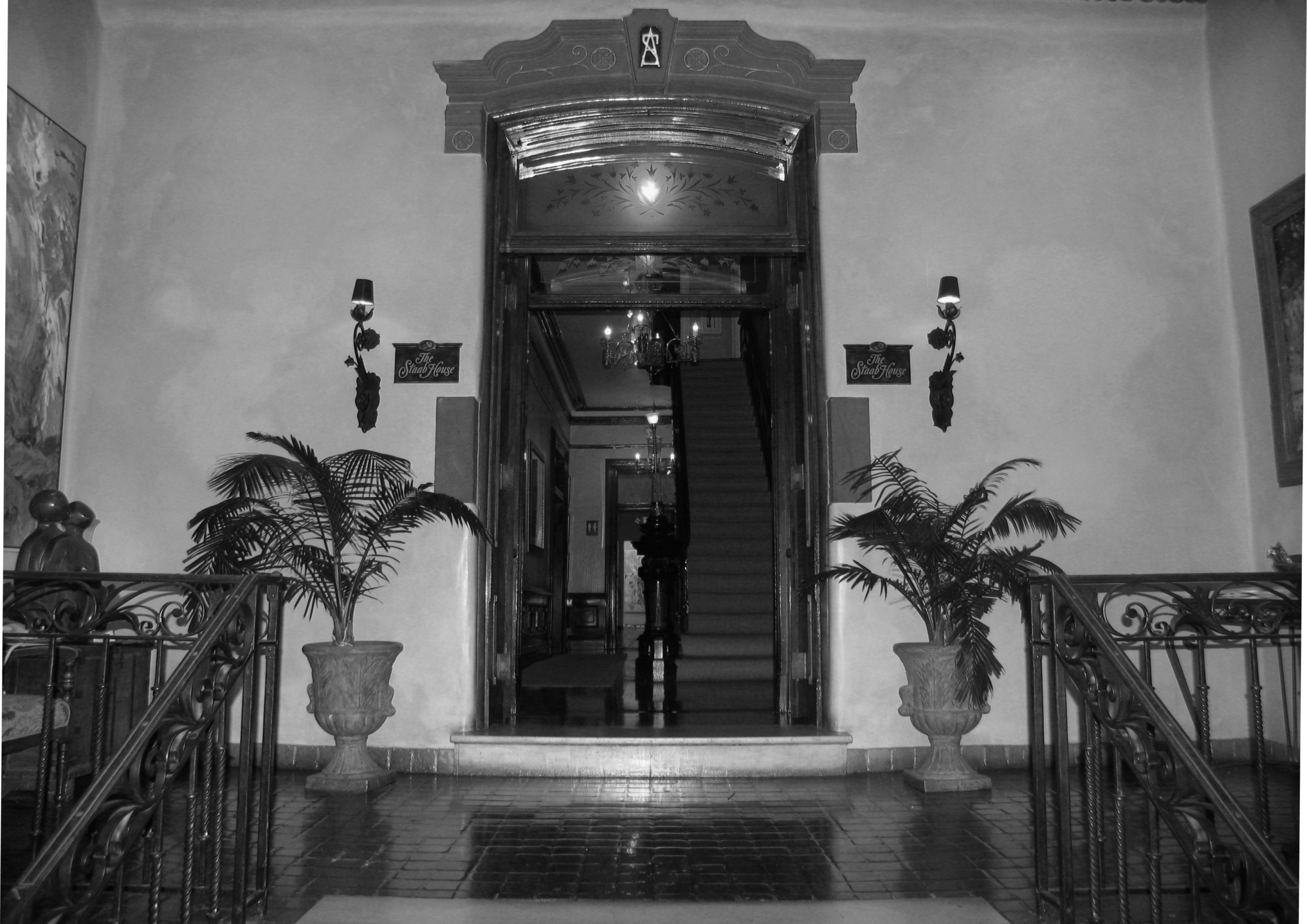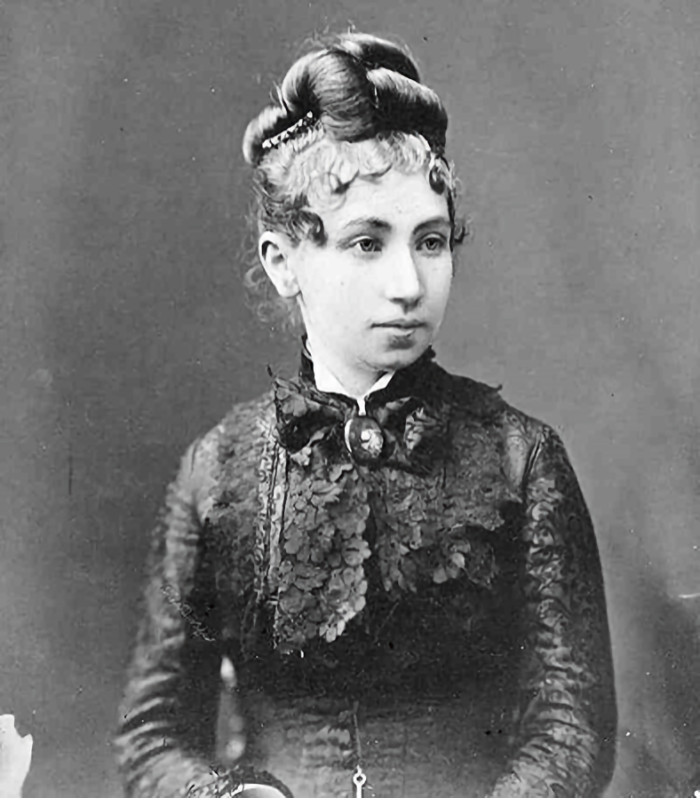Abraham Staab was fifteen years old when he came to the United States from Germany. He arrived in Norfolk, Virginia, where he worked for two years.
In 1856, he and his brother Zadoc took a job in Santa Fe with the Spiegelberg Brothers. There they honed their skills in the wholesale trading business. By 1858 the brothers went into business for themselves, forming a company called Zadoc Staab and Brother. Their venture quickly became very successful and soon became the most significant wholesale trading and merchandising establishment in the American Southwest. According to a book by Henry Tobias called A History of the Jews in New Mexico, (1990), the Staab brothers brought in $600,000 just from the wholesale trade of their business from 1874 to 1875.
By 1865, Abraham was quite wealthy and decided to travel back to Germany to marry Julia Schuster. The couple returned to Santa Fe where they lived in an average adobe house on Burro Street. However, Abraham made a promise to his new bride that he would build her a grand mansion in the European style.
The mansion was finally finished in 1882 and was located in a fashionable residential area of Santa Fe on East Palace Avenue. It was a three-story structure that was constructed in the French Second Empire style. It had a Mansard roof, and a widow’s walk which were favorite embellishments in the upper-class neighborhood where the mansion stood.
Author Paul Horgan described the inside of a mansion, much like the Staab’s; in his book “The Centuries of Santa Fe” (1956)
“It was one of the first brick structures in town. There was much ornamental ironwork on its roof ridges. The woodwork throughout was massive. Doors and windows had fluted frames with curved tops set in plaster moldings. The social rooms were large and high-ceilinged. Their effect was doubled by a number of floor-length mirrors framed in gold leaf. Everything in the house came “from the East,” and was meant to reflect the richest taste and best style. It was a style with a long history of travel behind it-from Prince Albert’s Germany to the England of his married life, and from the England of his widow to the Atlantic United States, and from there across the country, until by wagon train, it reached even to Santa Fe.”
Horgan also described Julia in the same book.
“She was an exquisite and dignified creature in a rugged outpost starved for urbanity. Her skin was white. Her clothes were beautifully made in the highest of fashion. She animated them with something of the effect of a small girl dressed up playing queen. She could make everybody smile simply on meeting them. Wait till she played the piano for them, and then she would make them sigh, or even weep.”
As Abraham Staab became more prosperous and became involved in the political life of Santa Fe. He was the first president of the Santa Fe Chamber of Commerce, and he was instrumental in bringing the railroad, the gasworks, and the territorial prison to Santa Fe.
Julia found her place in Santa Fe society and was a gracious hostess that was well liked in the town. Archbishop Jean Baptiste Lamy was among the Staab’s many friends.
Ralph Emerson Twitchell described the Staab’s role in Santa Fe society in his book “Old Santa Fe.”
“The social life of New Mexico’s capital, the brilliant functions of frequent occurrences given by the ladies and officers of Old Fort Marcy are wondrous memories with those who were privileged to participate. In those social sidelights of Santa Fe history, the Staab Mansion on Palace Avenue played prominently. Unostentatious, but magnificent in their simplicity were the contributions of Abraham and Mrs. Staab, with their older daughters…”
Julia bore seven children and lost an eighth, a daughter named Henriette. The news of the child’s death was published in the Santa Fe New Mexican on August 9th, 1883.
“Mr. and Mrs. Abraham Staab’s home was made glad only a few weeks ago by the coming of a new life and a new joy, a tiny girl babe. Today He who gave it called it home to His “mansion in the skies not built with hands, eternal in the heavens,” and sorrow reigns instead of joy. The infant daughter was but three weeks old. Its death occurred at 3 o’clock this morning, and at 8 o’clock this afternoon its white-robed form was laid away in the Masonic cemetery amid the tears and regrets of the sorrowing parents and their large circle of friends.”
Julia’s other pregnancies were plagued with difficulties. She also suffered several miscarriages and had other chronic health problems.
Whenever she became too ill, she traveled to Germany to recover. Living with one of her eight sisters, she visited various German doctors and visited health spas. Once she had sufficiently recovered, she returned to New Mexico. One such trip was recorded In a 1949 memoir by Sister Blandina Segale. Entitled “At the End of the Santa Fe Trail,’ the Santa Fe nun writes about accompanying a sickly Julia to a railroad depot in 1877. Her journeys were also reported in the local newspapers. On October 19th, 1891 the Las Vegas Daily Optic published a small piece in the community news section of the paper. It read;
“Mrs. A. Staab and daughters, of Santa Fe, are in Jianover (sic), Germany. Mrs. Staab has been quite ill, but is slowly recovering and gaining strength.”
However Julia did not completely recover and soon returned to New Mexico. Eventually, because of her deteriorating mental and physical health, Julia stayed upstairs in her bedroom and rarely
ventured out. She died in her room on May 14th, 1896 at the age of 52. On May 16th, the Las Vegas Daily Optic reported the news of her death.
“Mrs. A. Staab, wife of the well known Santa Fe merchant, died quite suddenly after a protracted illness extending over a period of five years. The deceased was about fifty two years of age, and leaves a husband, seven children and a large circle of friends to mourn her loss. She was a native of Lugade, Westobahs, Germany, and was one of twelve children. Her maiden name was Schuster, a notable family whose descendants are scattered all over the world. Mr. Staab was absent in New York at the time of her death.”

